Best Platform Engineering Tools 2024: Tips for Choosing the Right Solutions
- 1 Tips for Choosing the Right Platform Engineering Tools In 2024
- 1.1 Understand Your Needs
- 1.2 Scalability and Performance
- 1.3 Integration Capabilities
- 1.4 Flexibility and Customization
- 1.5 Security and Compliance
- 1.6 Vendor Reputation and Support
- 1.7 Total Cost of Ownership (TCO)
- 1.8 User-Friendliness and Training
- 1.9 Future-Proofing
- 2 Top 10 Platform Engineering Tools In 2024
- 2.1 1. Kubernetes:
- 2.1.1 Features:
- 2.2 2. Terraform:
- 2.2.1 Features:
- 2.3 3. Prometheus:
- 2.3.1 Features:
- 2.4 4. Istio:
- 2.4.1 Features:
- 2.5 5. GitLab CI/CD:
- 2.5.1 Features:
- 2.6 6. HashiCorp Vault:
- 2.6.1 Features:
- 2.7 7. Grafana:
- 2.7.1 Features:
- 2.8 8. Ansible:
- 2.8.1 Features:
- 2.9 9. Elasticsearch:
- 2.9.1 Features:
- 2.10 10. Jenkins X:
- 2.10.1 Features:
- 3 Conclusion:
- 3.0.1 FAQs:
- 3.0.2 What is the role of Kubernetes in platform engineering?
- 3.0.3 How does Prometheus contribute to observability in platform engineering?
- 3.0.4 What role does Ansible play in concontainerizednagement for platform engineering?
- 3.0.5 How does HashiCorp Vault enhance security in platform engineering?
- 3.0.6 What are the benefits of using Jenkins X for cloud platform engineering?
In the dynamic world of 2024, platform engineering tools are more than just software—they are the catalysts driving businesses towards unprecedented efficiency and innovation.
As the technology landscape continues to evolve at a breakneck pace, selecting the right tools becomes a pivotal decision for any organization aiming to stay competitive. This blog post is dedicated to guiding you through this complex terrain, offering valuable insights and practical tips to help you choose the best platform engineering tools that align perfectly with your specific needs and objectives.
Tips for Choosing the Right Platform Engineering Tools In 2024
Understand Your Needs
Understanding your unique platform engineering needs is the bedrock of selecting the right tools. It’s not just about the latest technology; it’s about what aligns with your organization’s goals and objectives. Begin by thoroughly analyzing your workflows, pinpointing bottlenecks, and identifying areas where the right tool could catalyze efficiency. This foundational step ensures that market trends do not sway your choice but are a strategic fit for your organization’s unique ecosystem.
Scalability and Performance
In the digital age, scalability and performance are desirable attributes and imperatives. When evaluating tools, consider their current performance and how well they can scale with your growing needs. Assess the tool’s architecture – can it handle an increase in load without compromising performance? Consider future growth projections and ensure that the tools you choose can stand the test of time and user load, providing a smooth and efficient experience at every stage of your business growth.
Integration Capabilities
In the intricate web of modern IT infrastructure, the ability of a tool to seamlessly integrate with existing systems is invaluable. A tool might be powerful, but its effectiveness is significantly diminished if it lives in isolation. Look for tools with well-documented APIs, compatibility with widely used standards, and a track record of successful integrations. This ensures a cohesive ecosystem where data flows smoothly and systems work harmoniously, unlocking the full potential of your technology stack.
Flexibility and Customization
Every organization has its unique DNA—a one-size-fits-all solution rarely fits perfectly. Flexibility and customization are key attributes that allow tools to adapt to your specific requirements. Investigate how easily a tool can be tailored to fit your workflows, processes, and organizational structure. The right tool should not just fit your current needs but should be malleable enough to evolve with your organization’s journey, offering intuitive and powerful customizations.
Security and Compliance
In a world where data breaches are commonplace, robust security and compliance features are not optional but compulsory. Scrutinize the security architecture of the tools you consider. Ensure they comply with industry standards and regulations relevant to your sector. Don’t hesitate to ask vendors for security certifications and audit reports. Remember, the cost of a security lapse far outweighs the investment in a secure, compliant tool.
Vendor Reputation and Support
A tool is only as good as the support behind it. A vendor with a strong reputation and a commitment to support ensures that you are not just buying a product but entering into a partnership. Research the vendor’s track record—look for testimonials, case studies, and reviews. Please pay special attention to their support structure. Do they offer 24/7 support? How responsive are they to issues? A vendor that stands firmly behind their product is a sign of reliability and quality.
Total Cost of Ownership (TCO)
The actual cost of a platform engineering tool extends beyond its purchase price. When calculating TCO, factor in installation, customization, training, support, and maintenance costs. Consider the efficiency gains the tool brings in and how it impacts your team’s productivity. A holistic view of TCO helps make a cost-effective and value-adding choice in the long run.
User-Friendliness and Training
The most powerful tool can become a liability if it’s not user-friendly. A steep learning curve can lead to user frustration, low adoption rates, and, ultimately, a failure to realize the tool’s potential benefits. Assess the user interface for intuitiveness and ease of use. Also, consider the training resources provided by the vendor. A tool with comprehensive training materials and support can significantly smooth out the adoption phase and empower your team to maximize the tool.
Future-Proofing
Today’s cutting-edge solution could become tomorrow’s obsolete technology in the fast-evolving tech landscape. Future-proofing is about anticipating and preparing for future developments. When selecting a tool, consider its roadmap, the vendor’s history of innovation, and how it adapts to emerging technologies. Opt for tools built with the future in mind—those that not only solve your current challenges but also have the agility to evolve with the changing tides of technology.
Top 10 Platform Engineering Tools In 2024
1. Kubernetes:
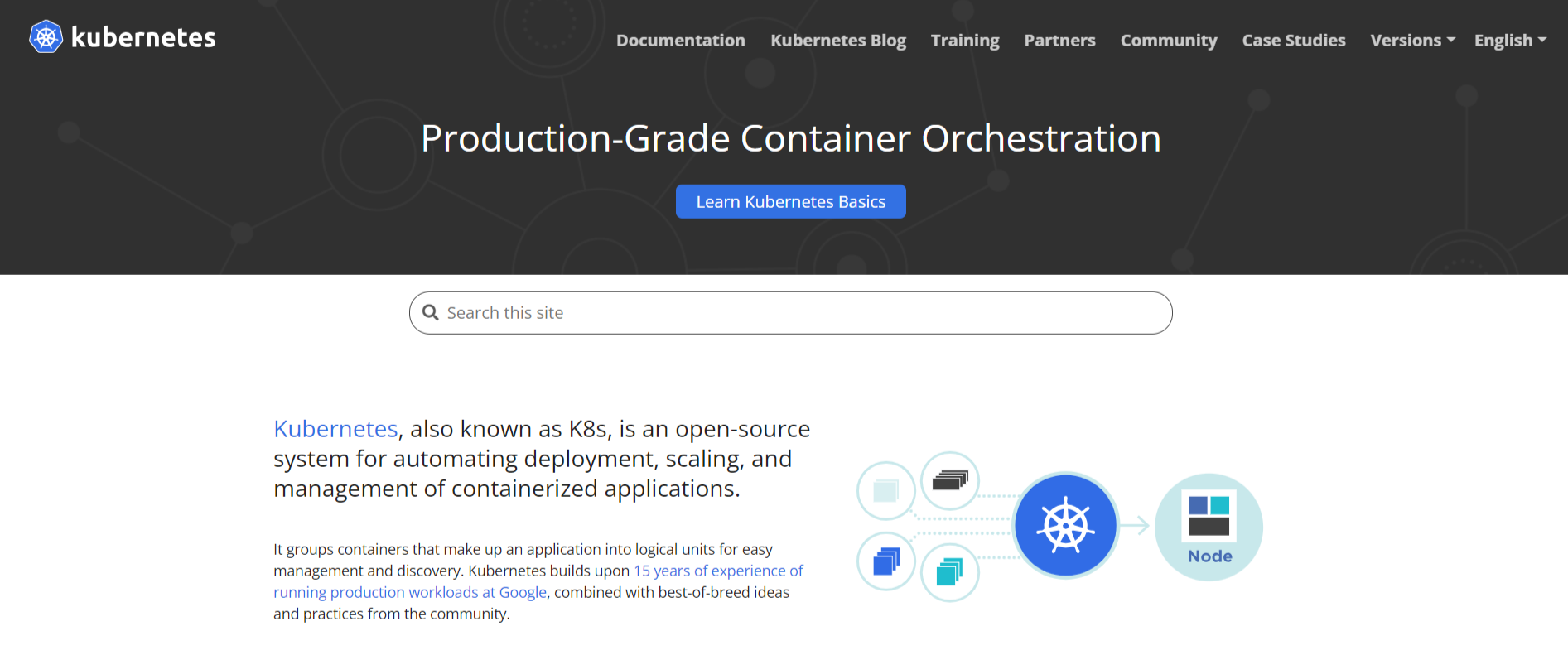
Kubernetes will continue to dominate as a leading platform engineering tool in 2024. Its robust container orchestration capabilities enable efficient deployment, scaling, and management of containerized applications. With features like automatic scaling, rolling updates, and service discovery, Kubernetes simplifies the management of complex microservices architectures. Its extensibility through APIs and a vast ecosystem of plugins further enhances its versatility, making it a top choice for building scalable and resilient platforms.
Features:
- Container Orchestration: Kubernetes automates the deployment, scaling, and management of containerized applications, providing a consistent and reliable environment for running microservices.
- Automatic Scaling: With built-in horizontal scaling capabilities, Kubernetes adjusts the number of container instances based on resource usage, ensuring optimal performance and utilization.
- Rolling Updates: Kubernetes supports rolling updates, enabling platform engineers to seamlessly deploy new versions of applications without downtime by gradually replacing old instances with new ones.
- Service Discovery: Kubernetes facilitates service discovery through DNS and built-in load balancing, allowing services to communicate with each other dynamically without manual configuration.
- Extensibility: Kubernetes provides a flexible and extensible platform through its API-driven architecture, enabling integration with various third-party tools and custom extensions to meet specific platform engineering requirements.
2. Terraform:
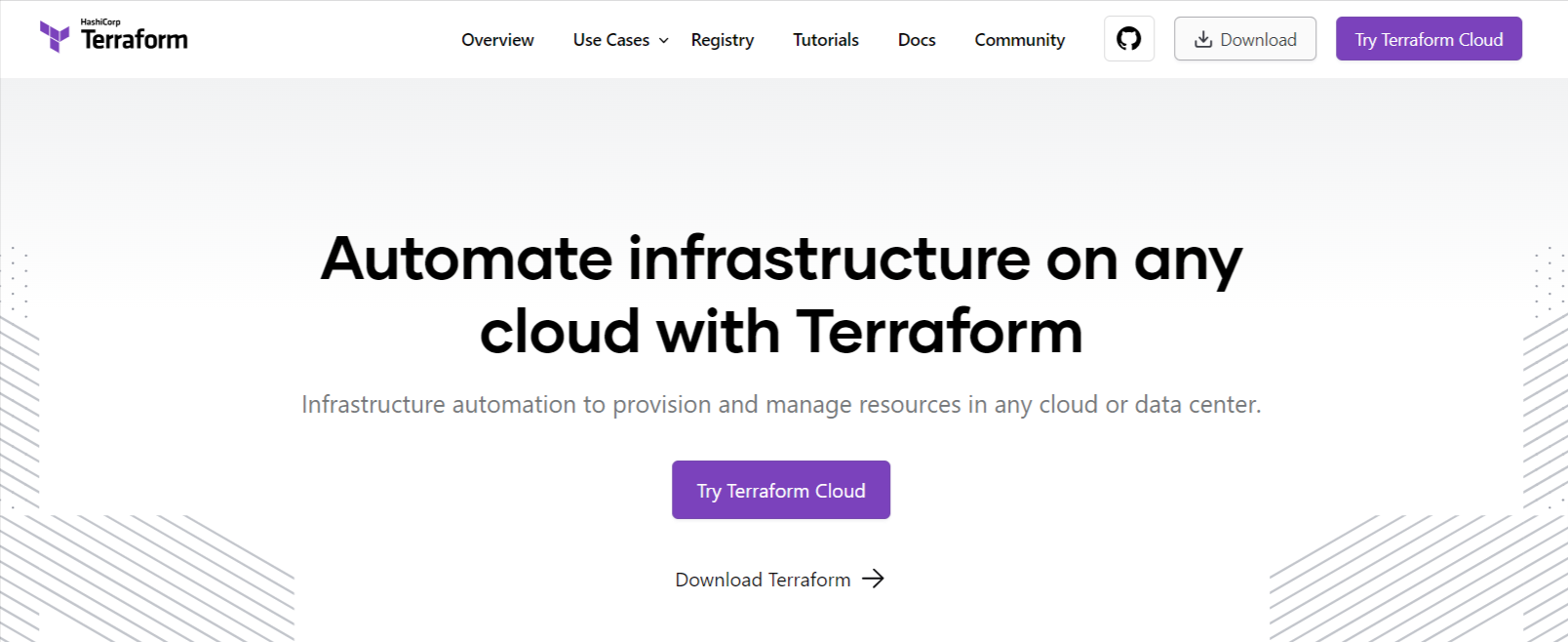
Terraform remains a cornerstone in infrastructure as code (IaC) tooling, providing a declarative approach to provisioning and managing infrastructure across various cloud providers and on-premises environments. Its modular architecture and support for multiple providers enable platform engineers to define infrastructure as reusable code, promoting consistency and scalability. Terraform’s version control integration and state management capabilities facilitate collaboration and ensure infrastructure integrity throughout its lifecycle.
Features:
- Infrastructure as Code (IaC): Terraform enables platform engineers to define infrastructure configurations as code using a declarative syntax, promoting consistency and reproducibility across environments.
- Multi-Cloud Support: Terraform supports multiple cloud providers, including AWS, Azure, and Google Cloud Platform, and on-premises environments, allowing platform engineers to manage diverse infrastructure setups from a single configuration.
- Modularity: Terraform’s modular design allows for the creating of reusable infrastructure components, facilitating code reuse and simplifying the management of complex infrastructure setups.
- Version Control Integration: Terraform integrates with version control systems like Git, enabling platform engineers to manage infrastructure configurations alongside application code and track changes over time.
- State Management: Terraform maintains a state file that keeps track of the current state of infrastructure, facilitating collaboration among team members and ensuring consistent infrastructure deployments.
3. Prometheus:
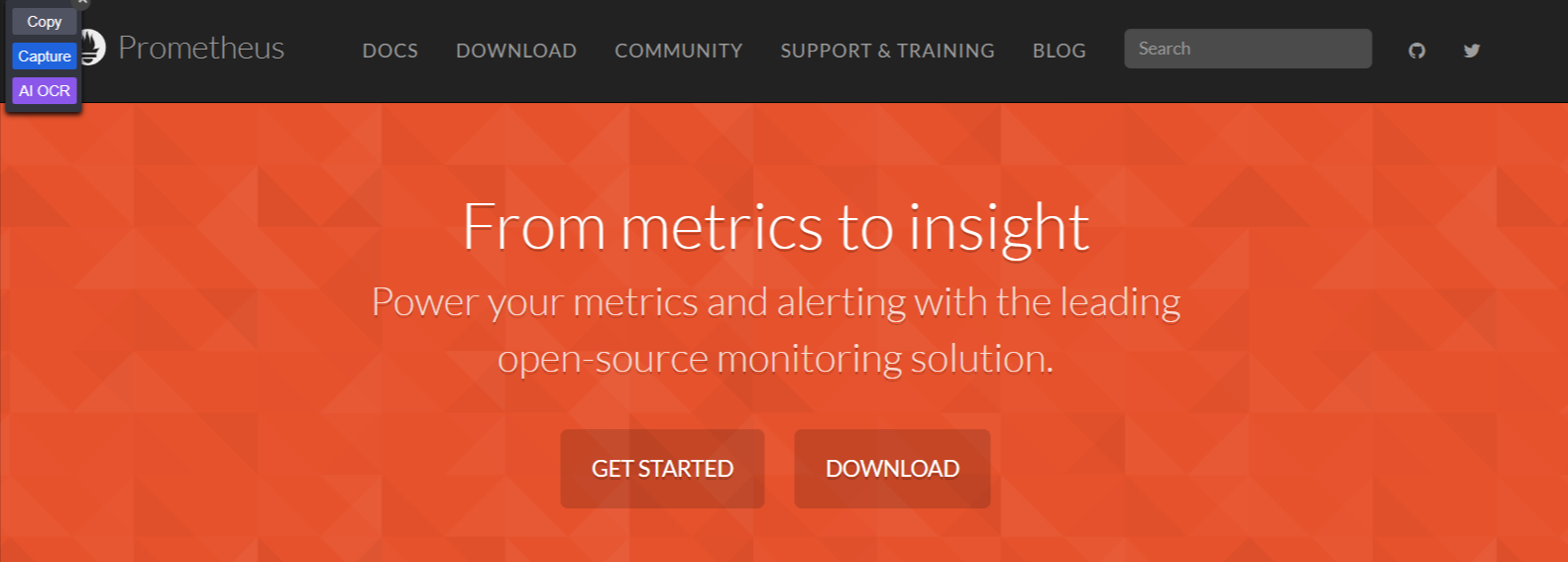
As observability becomes increasingly critical for platform engineering, Prometheus will be a leading monitoring and alerting solution in 2024. Its dimensional data model and powerful query language enable real-time monitoring of diverse systems and applications, empowering platform engineers to gain insights into performance, detect anomalies, and troubleshoot issues proactively. Prometheus’s seamless integration with Kubernetes and other container orchestrators simplifies monitoring in dynamic environments, while its extensive ecosystem of exporters and integrations enhances its adaptability to diverse tech stacks.
Features:
- Dimensional Data Model: Prometheus uses a dimensional data model, allowing platform engineers to collect and query time-series data with labels, facilitating flexible and powerful monitoring queries.
- Query Language: Prometheus Query Language (PromQL) enables platform engineers to write expressive and efficient queries to analyze and visualize metrics, providing insights into system performance and behaviour.
- Real-Time Monitoring: Prometheus provides real-time monitoring capabilities, allowing platform engineers to monitor system metrics and alert on anomalies or performance issues as they occur.
- Kubernetes Integration: Prometheus seamlessly integrates with Kubernetes, enabling automatic discovery and monitoring of Kubernetes components and applications running in Kubernetes clusters.
- Exporter Ecosystem: Prometheus features a rich ecosystem of exporters and integrations, allowing platform engineers to collect metrics from various systems and applications, including databases, web servers, and custom applications.
4. Istio:
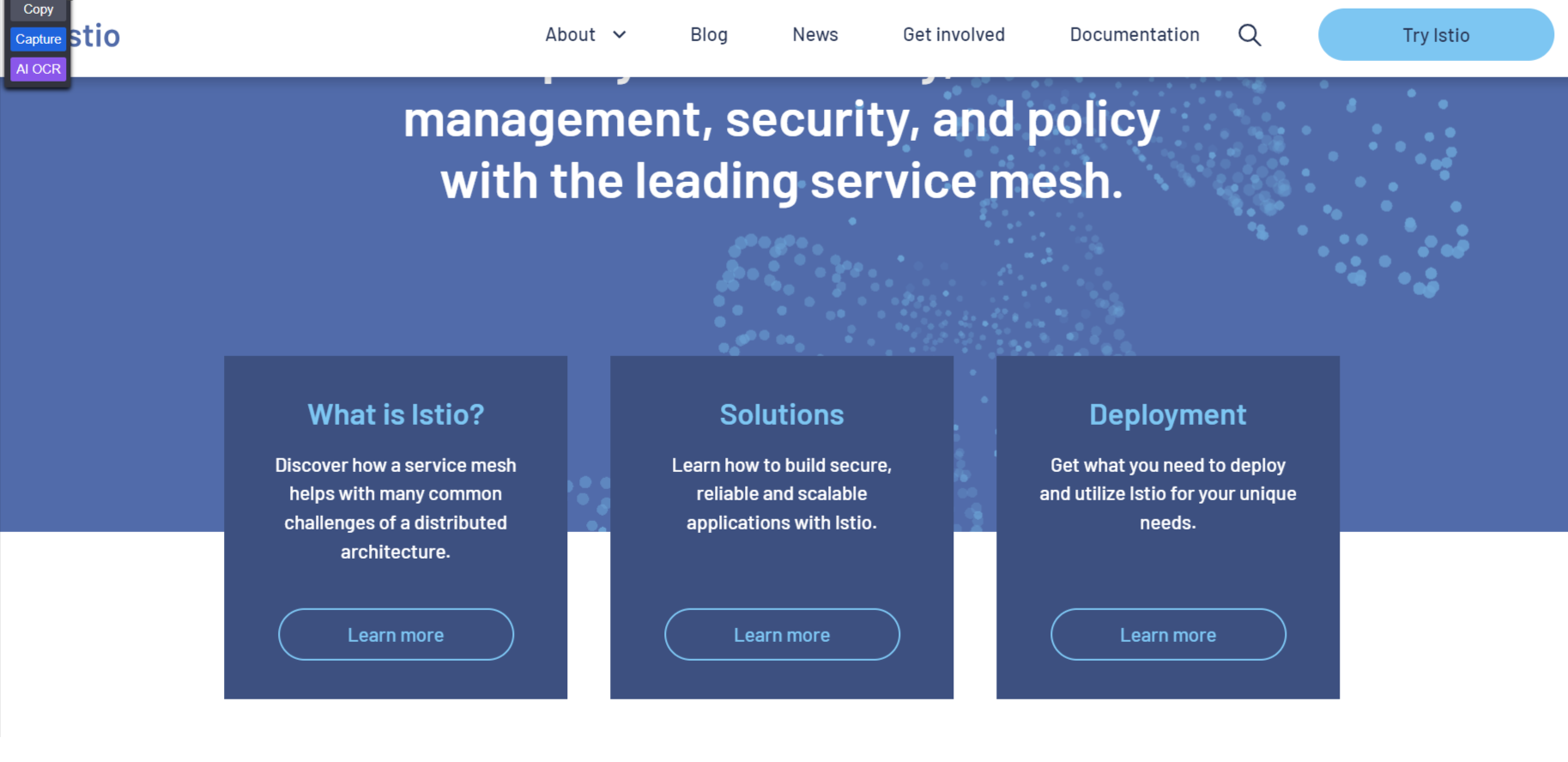
Istio emerges as a prominent tool for service mesh implementation in 2024, offering advanced traffic management, security, and observability features for microservices architectures. By abstracting away networking complexities and providing a unified control plane, Istio enables platform engineers to implement fine-grained traffic control, secure service-to-service communication with mTLS encryption, and gain deep visibility into service interactions through distributed tracing and metrics collection. Its integration with Kubernetes and support for multi-cluster deployments make it a valuable tool for building resilient and secure platforms.
Features:
- Traffic Management: Istio provides advanced traffic management features, including traffic routing, load balancing, and fault tolerance, enabling platform engineers to implement sophisticated traffic control strategies for microservices.
- Security: Istio enhances service-to-service communication security through mutual TLS (mTLS) encryption, ensuring data confidentiality and integrity within the microservices architecture.
- Observability: Istio offers comprehensive observability features, including distributed tracing, metrics collection, and logging, providing platform engineers with insights into service interactions and performance.
- Kubernetes Integration: Istio integrates seamlessly with Kubernetes, leveraging Kubernetes’ native features for service discovery and management, making it easy to deploy and manage Istio within Kubernetes clusters.
- Multi-Cluster Support: Istio supports multi-cluster deployments, allowing platform engineers to extend Istio’s capabilities across multiple Kubernetes clusters and environments.
5. GitLab CI/CD:

GitLab CI/CD remains a top choice for continuous integration and delivery pipelines in 2024, offering a comprehensive DevOps platform that integrates seamlessly with version control, issue tracking, and container registries. Its intuitive YAML-based pipeline configuration allows platform engineers to easily define automated workflows for building, testing, and deploying applications. GitLab’s built-in security scanning and compliance checks ensure code quality and adherence to best practices throughout the development lifecycle. Its scalable architecture and support for Kubernetes-native deployments make it well-suited for modern platform engineering workflows.
Features:
- YAML-based Pipelines: GitLab CI/CD allows platform engineers to define CI/CD pipelines as code using a YAML-based syntax, enabling automation of build, test, and deployment workflows.
- Integration: GitLab CI/CD integrates seamlessly with GitLab’s version control, issue tracking, and container registry features, providing a unified platform for managing the entire software development lifecycle.
- Security Scanning: GitLab CI/CD includes built-in security scanning features, such as static code analysis and dependency scanning, helping platform engineers identify and remediate security vulnerabilities early in development.
- Compliance Checks: GitLab CI/CD provides compliance checks and reporting capabilities, enabling platform engineers to ensure adherence to regulatory requirements and industry best practices throughout the CI/CD pipeline.
- Kubernetes-native Deployments: GitLab CI/CD supports Kubernetes-native deployments, allowing platform engineers to deploy applications to Kubernetes clusters directly from CI/CD pipelines, streamlining the deployment process for containerized applications.
6. HashiCorp Vault:
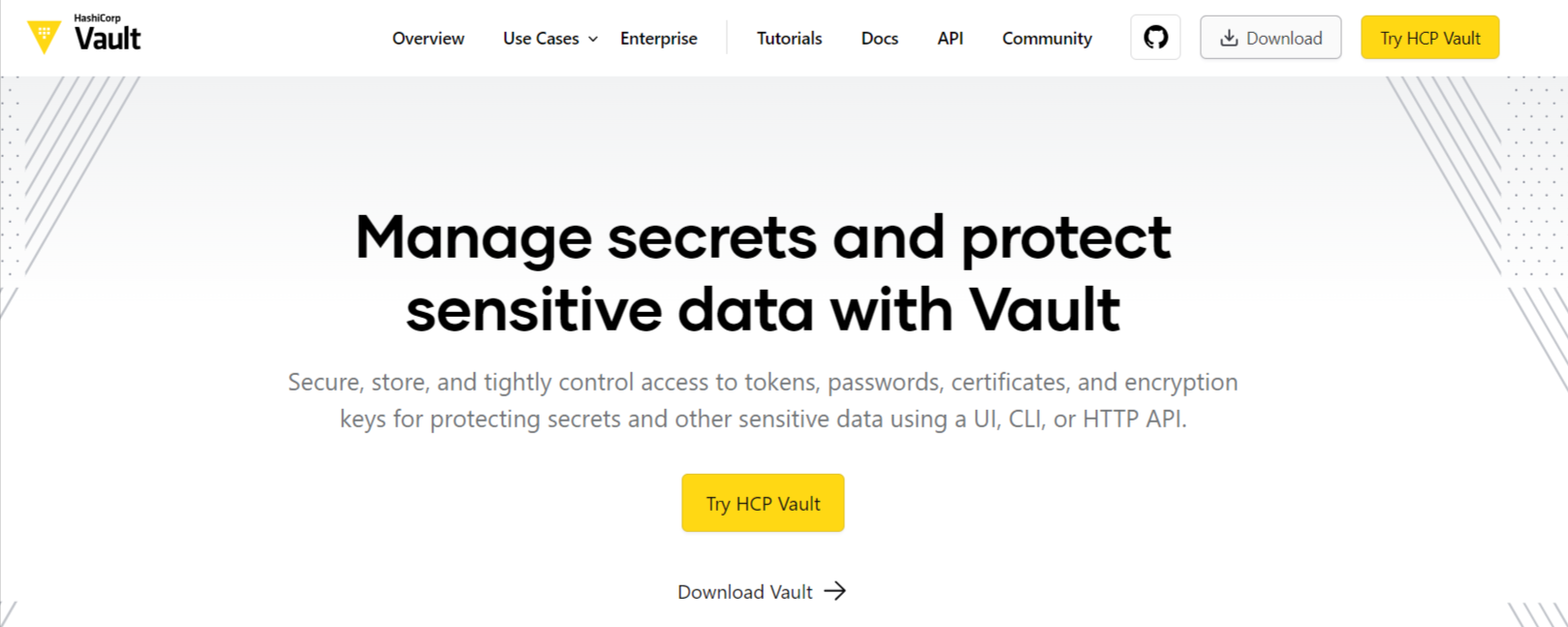
HashiCorp Vault is a comprehensive secret management tool that safeguards sensitive data and credentials across diverse cloud and on-premises environments. With its centralized approach to secrets management, Vault offers a secure and scalable solution for storing, generating, and accessing secrets such as passwords, API keys, and certificates. By providing robust encryption, dynamic secrets generation, and fine-grained access control, Vault empowers platform engineers to enhance security posture and compliance while seamlessly integrating with existing infrastructure and workflows.
Features:
- Secrets Management: HashiCorp Vault provides a centralized solution for managing and securely storing sensitive data such as passwords, API keys, and certificates.
- Dynamic Secrets: Vault supports dynamic secrets generation, enabling platform engineers to create short-lived credentials on-demand, reducing the risk of unauthorized access.
- Encryption as a Service: Vault offers encryption, allowing platform engineers to encrypt data at rest and in transit, ensuring data confidentiality and integrity.
- Access Control: Vault provides fine-grained access control policies, enabling platform engineers to define who can access which secrets and under what conditions, enhancing security and compliance.
- Integration: Vault integrates with various cloud providers, databases, and identity providers, enabling seamless integration into existing infrastructure and workflows.
7. Grafana:
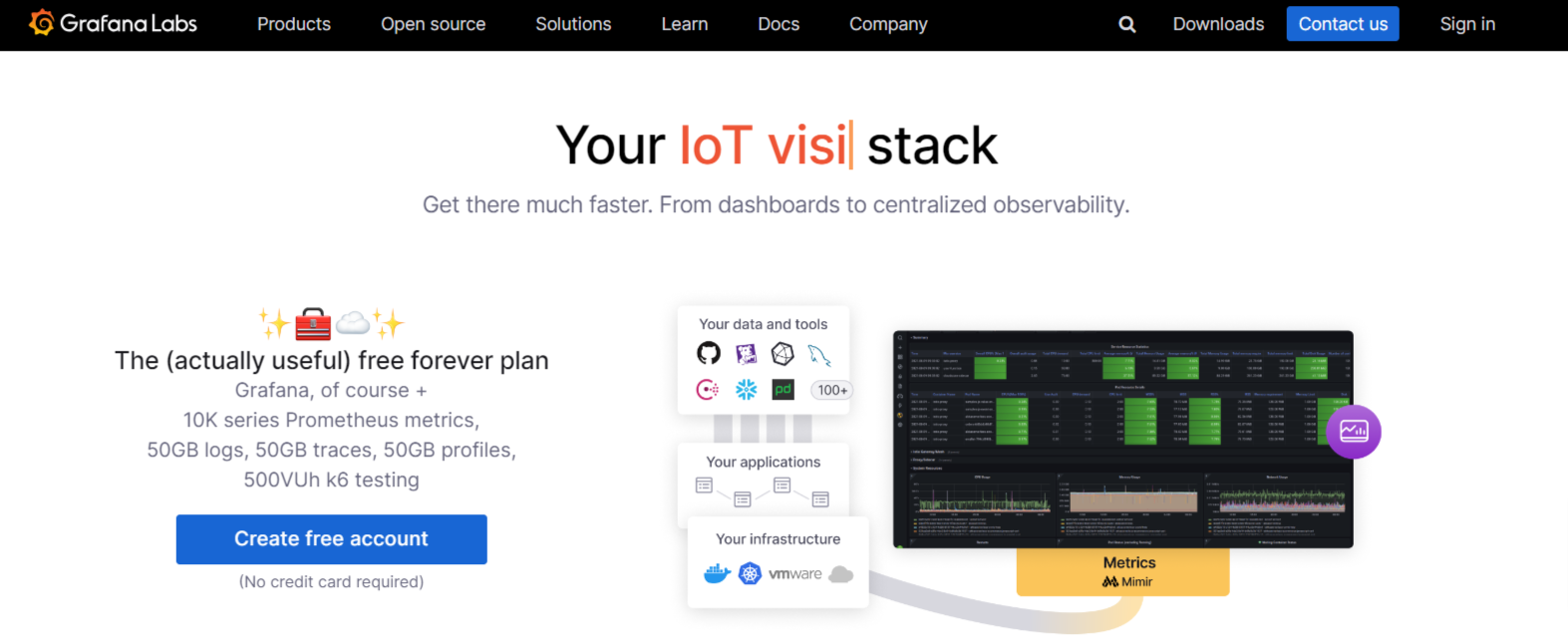
Grafana is a powerful data visualization and monitoring tool that enables platform engineers to create interactive dashboards for visualizing metrics and analytics from various data sources. With its user-friendly interface and extensive customization options, Grafana facilitates real-time monitoring, alerting, and analysis of system performance and application metrics. By integrating with popular data sources like Prometheus and InfluxDB, Grafana empowers platform engineers to gain insights into complex systems and make data-driven decisions quickly.
Features:
- Data Visualization: Grafana offers powerful data visualization capabilities, enabling platform engineers to create interactive and customizable dashboards to monitor and analyze metrics from various data sources.
- Alerting: Grafana supports alerting based on metric thresholds, enabling platform engineers to set up real-time alerts for detecting anomalies or performance issues.
- Data Source Integration: Grafana integrates with many data sources, including Prometheus, InfluxDB, and Elasticsearch, allowing platform engineers to visualize metrics from diverse systems and applications.
- Templating: Grafana provides templating support, enabling platform engineers to create reusable dashboard templates with dynamic variables, simplifying dashboard management for large-scale deployments.
- Community Plugins: Grafana features a vibrant community ecosystem with plugins and extensions, offering additional visualization options and integrations with third-party systems.
8. Ansible:
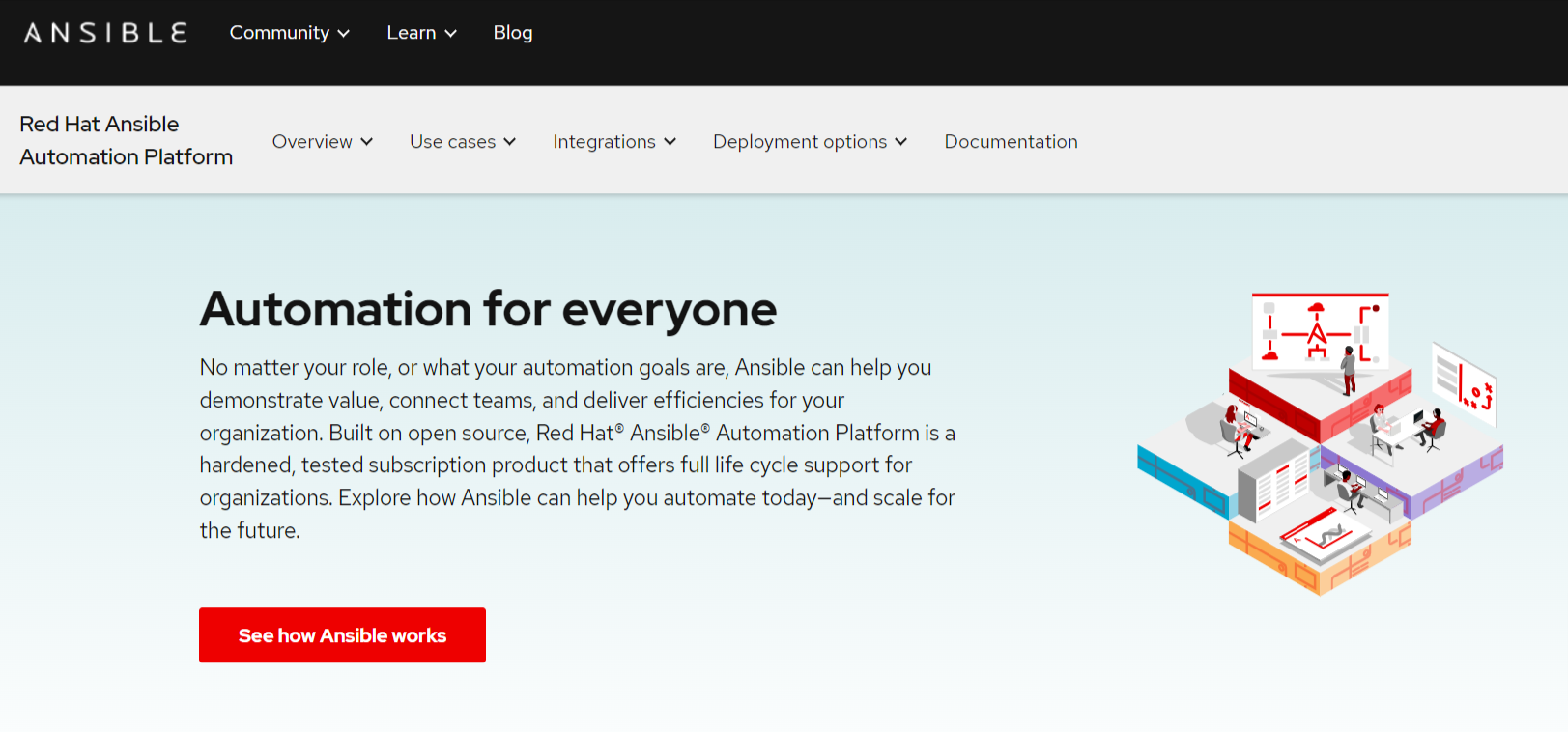
Ansible is a leading configuration management tool renowned for its simplicity, flexibility, and agentless architecture. Ansible is a powerful automation platform that enables engineers to define infrastructure configurations as code and efficiently orchestrate complex tasks across diverse systems and environments. By leveraging YAML-based playbooks and idempotent execution, Ansible promotes consistency, reliability, and scalability in infrastructure management. With seamless integration into existing development and deployment workflows, Ansible simplifies automation and accelerates time-to-market for platform engineering initiatives.
Features:
- Configuration Management: Ansible automates configuration management tasks, enabling platform engineers to define infrastructure configurations as code and enforce desired states across environments.
- Agentless Architecture: Ansible uses an agentless architecture, allowing platform engineers to manage remote systems without installing additional software, simplifying deployment and management.
- Playbooks: Ansible uses YAML-based playbooks to define automation workflows, enabling platform engineers to efficiently orchestrate complex tasks across multiple systems.
- Idempotent Execution: Ansible ensures idempotent execution of tasks, meaning the same playbook can be run multiple times without causing unintended changes, promoting consistency and reliability.
- Integration: Ansible integrates with popular version control systems like Git and continuous integration platforms like Jenkins, enabling seamless integration into existing development and deployment workflows.
9. Elasticsearch:
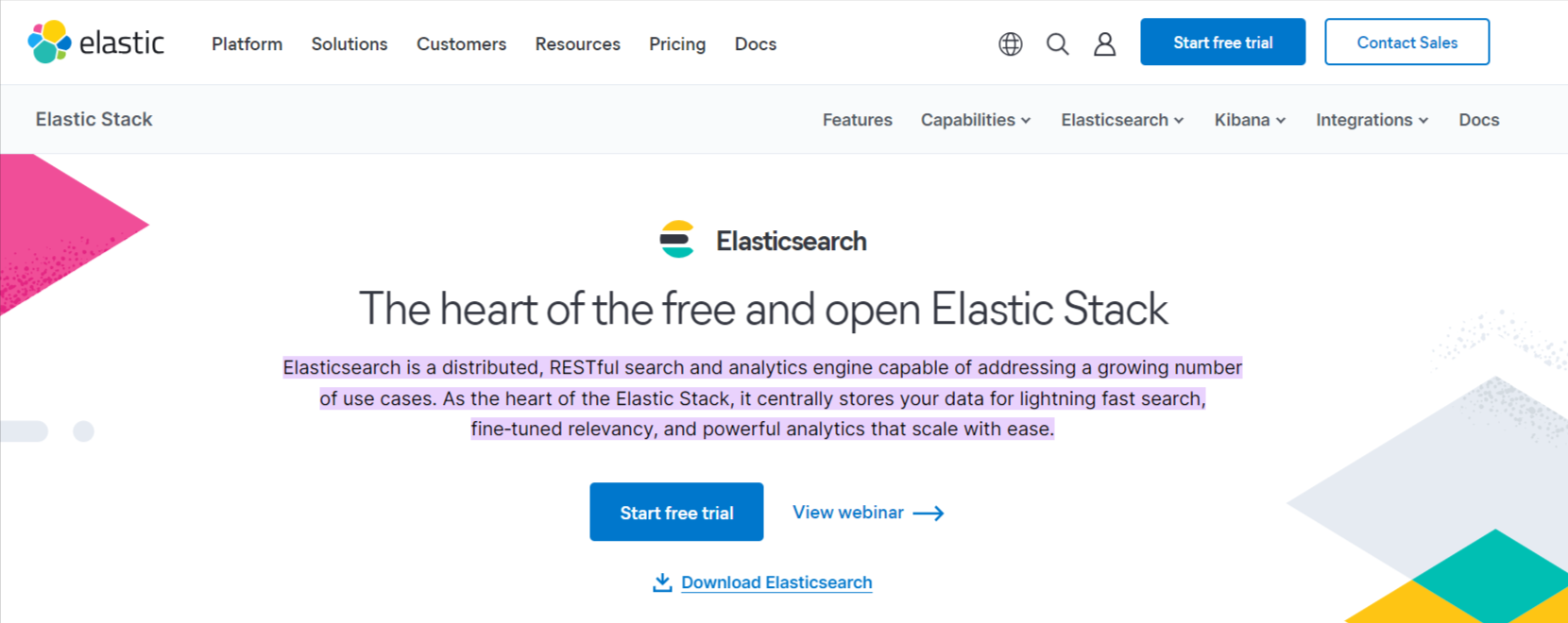
Elasticsearch is a distributed search and analytics engine designed to handle large volumes of data and enable real-time search and analysis. As a core component of the Elastic Stack, Elasticsearch provides powerful full-text search capabilities, aggregations, and scalability, making it ideal for building scalable search and analytics solutions. With its integration with various data sources and visualization tools like Grafana and Kibana, Elasticsearch empowers platform engineers to extract insights from vast datasets and build end-to-end data analytics and monitoring solutions.
Features:
- Search and Analytics: Elasticsearch provides powerful capabilities, enabling platform engineers to index and search large volumes of structured and unstructured data in real-time.
- Scalability: Elasticsearch is horizontally scalable, allowing platform engineers to scale the cluster dynamically to handle increasing data volumes and query loads.
- Full-Text Search: Elasticsearch supports full-text search, enabling platform engineers to perform complex search queries across multiple fields and data types with high performance.
- Aggregations: Elasticsearch offers aggregations for data analysis, enabling platform engineers to extract insights from large datasets through metrics calculations, histograms, and more.
- Integration: Elasticsearch integrates with various data sources and visualization tools like Grafana and Kibana, enabling platform engineers to build end-to-end data analytics and monitoring solutions.
10. Jenkins X:
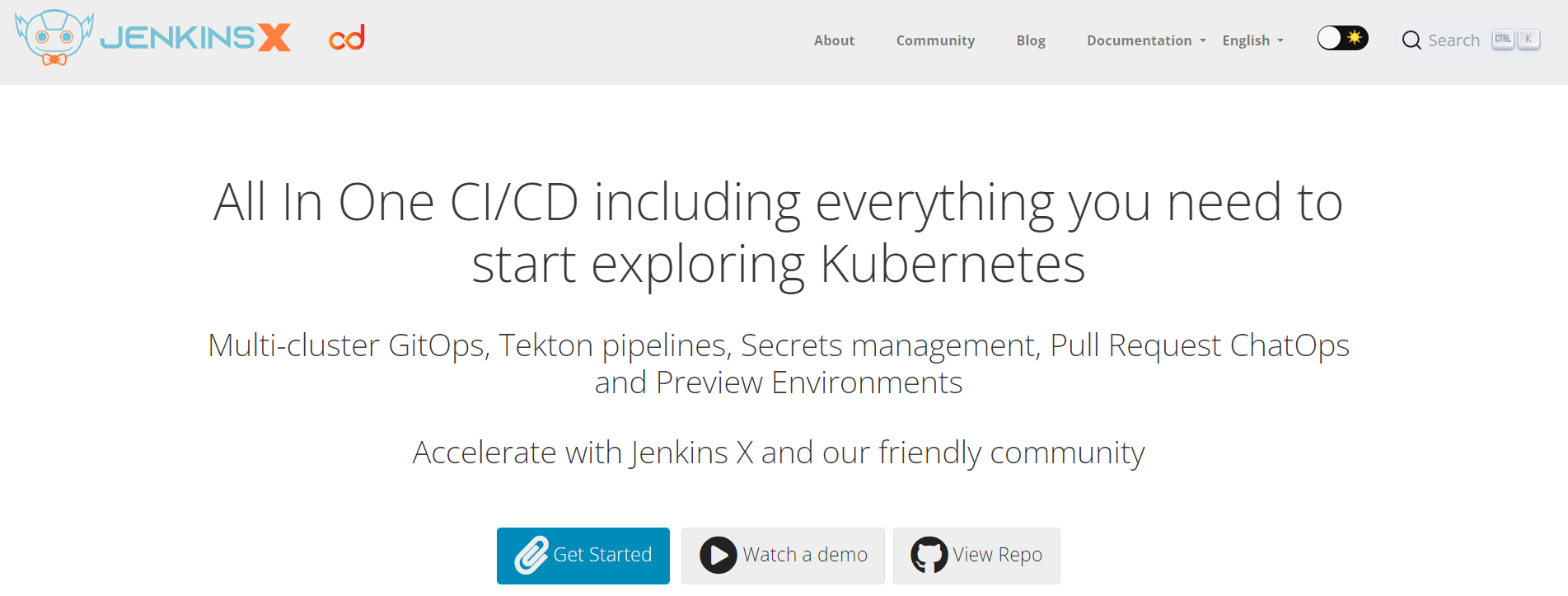
Jenkins X is a cloud-native continuous integration and continuous delivery (CI/CD) solution tailored for Kubernetes and microservices architectures. With its GitOps approach and Kubernetes-native workflows, Jenkins X enables platform engineers to seamlessly automate the build, test, and deployment of pipelines in modern cloud environments. By providing features such as dynamic preview environments, built-in GitLab integration, and Helm chart-based deployments, Jenkins X streamlines the CI/CD process and accelerates the delivery of high-quality software in Kubernetes-based environments.
Features:
- Cloud-Native CI/CD: Jenkins X is a cloud-native CI/CD solution tailored for Kubernetes and microservices architectures, enabling platform engineers to automate build, test, and deployment workflows in modern cloud environments.
- GitOps: Jenkins X follows a GitOps approach, where the entire CI/CD pipeline is defined and managed through version control, promoting collaboration and traceability.
- Preview Environments: Jenkins X supports the dynamic creation of preview environments for each pull request, enabling platform engineers to test changes in a production-like environment before merging.
- Built-in GitLab Integration: Jenkins X integrates seamlessly with GitLab for version control and issue tracking, providing a unified platform for managing the software development lifecycle.
- Kubernetes-native Workflows: Jenkins X leverages Kubernetes-native workflows and Helm charts for application deployment, ensuring consistency and portability across different Kubernetes clusters
Conclusion:
In conclusion, the landscape of platform engineering tools in 2024 is characterized by diverse solutions designed to address the evolving needs of modern software development and infrastructure management. From Kubernetes and Terraform for container orchestration and infrastructure as code to Prometheus and Grafana for monitoring and visualization and HashiCorp Vault for secrets management, these tools offer robust capabilities to streamline development workflows, enhance security, and ensure scalability and reliability in building and managing complex platforms. Additionally, Istio, Ansible, Elasticsearch, GitLab CI/CD, and Jenkins X further augment the toolkit available to platform engineers, providing advanced features for service mesh implementation, configuration management, search and analytics, and cloud-native CI/CD automation. By leveraging these tools effectively, platform engineers can navigate the complexities of modern IT landscapes, accelerate innovation, and deliver value to their organizations and end-users.
FAQs:
What is the role of Kubernetes in platform engineering?
Kubernetes is a container orchestration platform that automates the deployment, scaling, and management of containerized applications. It simplifies the management of complex microservices architectures, enhances scalability and reliability, and facilitates efficient resource utilization in platform engineering.
How does Prometheus contribute to observability in platform engineering?
Prometheus is a monitoring and alerting solution that provides real-time monitoring of systems and applications. It offers a dimensional data model, powerful query language, and extensive ecosystem of exporters and integrations, enabling platform engineers to gain insights into performance, detect anomalies, and troubleshoot issues proactively.
What role does Ansible play in concontainerizednagement for platform engineering?
Ansible is a configuration management tool that automates infrastructure provisioning and management. It allows platform engineers to define infrastructure configurations as code, enforce desired state across environments, and orchestrate complex tasks across diverse systems and environments with ease.
How does HashiCorp Vault enhance security in platform engineering?
HashiCorp Vault is a secrets management tool that provides a centralized solution for securely storing and managing sensitive data and credentials. It offers features such as dynamic secrets generation, encryption as a service, and fine-grained access control, enabling platform engineers to enhance security posture and compliance in platform engineering.
What are the benefits of using Jenkins X for cloud platform engineering?
Jenkins X is a cloud-native CI/CD solution tailored for Kubernetes and microservices architectures. It follows a GitOps approach, offers dynamic preview environments, built-in GitLab integration, and Kubernetes-native workflows, streamlining the CI/CD process and accelerating the delivery of high-quality software in Kubernetes-based environments.

















